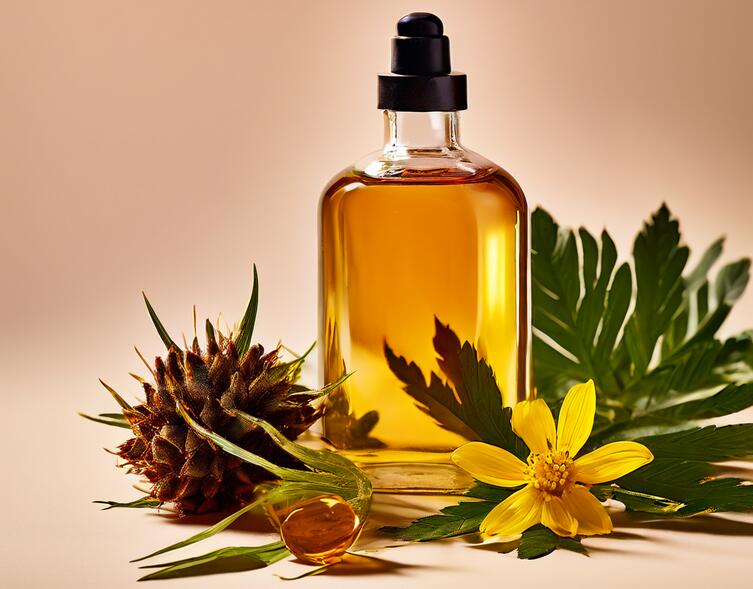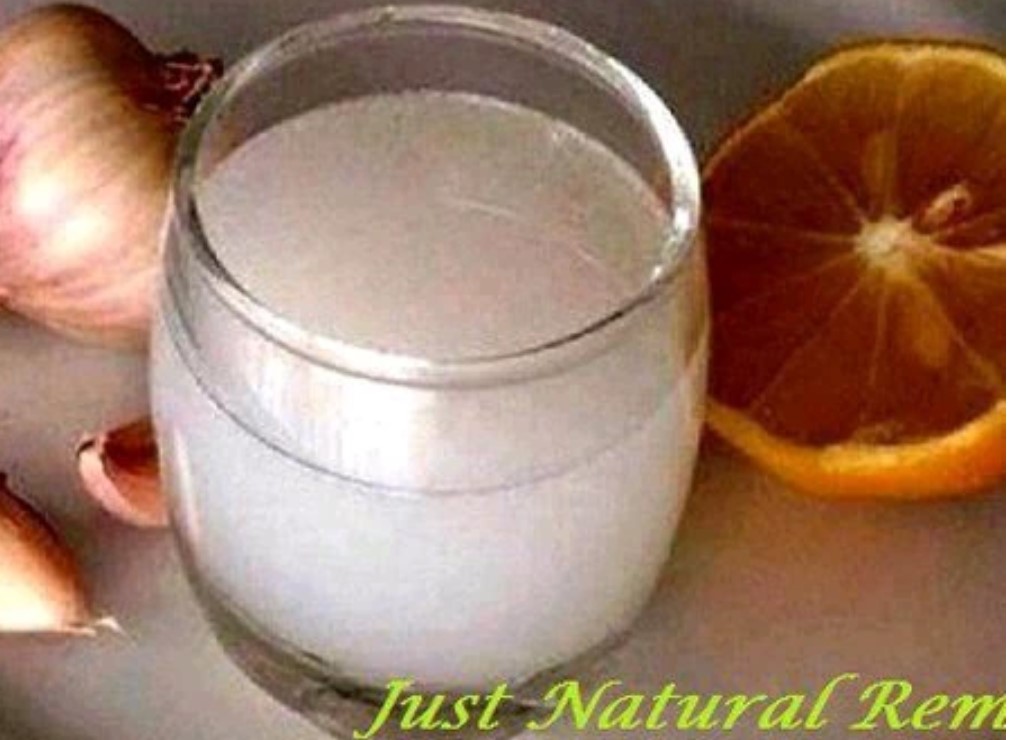HEALTH & LIFESTYLE
30 Amazing Benefits and Uses of Castor Oil
Published
9 months agoon
By
1oo9t
Castor oil is a thick, pale yellow liquid derived from the seeds of the castor plant (Ricinus communis). It’s rich in ricinoleic acid. This monounsaturated fatty acid is known for its moisturizing, anti-inflammatory, and antimicrobial properties. Castor oil has been used for centuries in traditional medicine and is now gaining popularity as a natural remedy for various health concerns. In this comprehensive guide, we’ll explore 30 amazing uses and benefits of castor oil…Click Here To Continue Reading>> …Click Here To Continue Reading>>
Hair and Scalp Health: Unlocking Your Crowning Glory
1. Promote Hair Growth
Castor oil has long been hailed as a natural hair growth stimulant, and for good reason. The star player here is ricinoleic acid. This is a unique fatty acid that makes up about 90% of castor oil’s composition.
This powerhouse ingredient works its magic by improving blood circulation to the scalp, effectively nourishing hair follicles, and promoting faster, thicker hair growth.
How to Use:
- Start with clean, damp hair.
- Warm a small amount of castor oil between your palms.
- Gently massage the oil into your scalp using circular motions.
- Pay extra attention to areas where you’d like to see more growth.
- Leave the oil on overnight, covering your pillow with a towel to protect it.
- Wash your hair thoroughly in the morning.
For best results, repeat this treatment once a week. Patience is key – while some users report seeing results in as little as two weeks, it typically takes 2-3 months of consistent use to notice significant changes.
2. Combat Dandruff
Dandruff can be both embarrassing and uncomfortable, but castor oil offers a natural solution. Its antifungal and antibacterial properties make it an effective treatment for those pesky white flakes. Moreover, castor oil’s moisturizing qualities help soothe an itchy, dry scalp – often the root cause of dandruff.
DIY Dandruff Treatment:
- Mix equal parts castor oil and coconut oil in a small bowl.
- Section your hair and apply the mixture directly to your scalp.
- Gently massage for 5-10 minutes to ensure even distribution.
- Leave the treatment on for 30 minutes to an hour.
- Shampoo and condition as usual, making sure to rinse thoroughly.
Use this treatment once a week for best results. The combination of castor and coconut oil not only fights dandruff but also leaves your hair soft and shiny.
3. Thicken Eyebrows and Eyelashes
Are you dreaming of fuller brows and longer lashes? Castor oil might be your ticket to achieving that coveted look naturally. The fatty acids in castor oil nourish the hair follicles, promoting growth and increasing the thickness of both eyebrows and eyelashes.
Application Tips:
- For eyebrows: Use a clean spoolie brush or a cotton swab to apply a small amount of castor oil to your brows before bed. Gently massage it in and leave it overnight.
- For eyelashes: Dip a clean mascara wand into castor oil and carefully apply it to your lashes, avoiding getting the oil in your eyes. Apply before bed and wash off in the morning.
Consistency is key – apply nightly for at least a month to start seeing results. Many users report noticeably thicker brows and longer lashes within 6-8 weeks of regular use.
4. Condition and Soften Hair
Castor oil is nature’s answer to dry, brittle hair. Its unique composition allows it to penetrate the hair shaft, locking in moisture and adding a beautiful shine. This makes it an excellent natural conditioner, particularly beneficial for those with dry or damaged hair.
Deep Conditioning Treatment:
- Warm 2-3 tablespoons of castor oil (adjust based on hair length).
- Apply the oil to your hair, focusing on the ends and working your way up.
- Gently massage your scalp to ensure even distribution.
- Cover your hair with a shower cap or warm towel.
- Leave the treatment on for 1-2 hours, or overnight for intense conditioning.
- Shampoo and condition, as usual, repeating if necessary to remove all oil.
For an extra boost, mix castor oil with other nourishing oils like argan or jojoba. Use this treatment once a week for noticeably softer, shinier hair.

Skin Care: Your Path to Radiant Skin
5. Moisturize Dry Skin
Banish Dryness Naturally Castor oil’s emollient properties make it a superstar when it comes to moisturizing dry, flaky skin. Its thick consistency creates a protective barrier on the skin, locking in moisture and preventing water loss.
How to Use:
- After your regular moisturizer, warm a few drops of castor oil between your palms.
- Gently pat the oil onto areas prone to dryness, such as elbows, knees, and heels.
- For extremely dry skin, mix equal parts castor oil and coconut oil for an ultra-hydrating blend.
Pro tip: Apply castor oil to damp skin for enhanced absorption and hydration.
6. Reduce Acne
It might seem counterintuitive to use oil on acne-prone skin, but castor oil’s unique properties can actually help combat breakouts. Its antibacterial qualities fight acne-causing bacteria, while its anti-inflammatory effects reduce redness and swelling.
Acne Spot Treatment:
- Cleanse your face thoroughly.
- Dip a cotton swab in castor oil.
- Dab the oil directly onto acne spots.
- Leave overnight and rinse in the morning.
For sensitive skin, dilute castor oil with a carrier oil like jojoba or grapeseed oil. Remember, a little goes a long way – using too much can potentially clog pores.
7. Soothe Sunburn
Spent too much time in the sun? Castor oil’s anti-inflammatory properties can help soothe sunburned skin, providing relief and promoting healing.
Sunburn Soother Recipe:
- Mix 1 tablespoon of castor oil with 2 tablespoons of aloe vera gel.
- Gently apply the mixture to sunburned areas.
- Reapply as needed for cooling relief.
The combination of castor oil’s healing properties and aloe vera’s cooling effect can significantly reduce discomfort and speed up recovery.
8. Minimize Fine Lines and Wrinkles
Castor oil’s rich fatty acid content can help plump the skin, reducing the appearance of fine lines and wrinkles. Its ability to stimulate collagen and elastin production makes it a natural anti-aging treatment.
Anti-Aging Application:
- Cleanse your face and pat dry.
- Warm a few drops of castor oil between your fingertips.
- Gently massage the oil around your eyes and mouth, focusing on areas with fine lines.
- Leave on overnight and rinse in the morning.
For best results, use nightly as part of your skincare routine. Many users report smoother, more youthful-looking skin within 4-6 weeks of consistent use.
9. Heal Cracked Heels
Dry, cracked heels can be both unsightly and uncomfortable. Castor oil’s deep moisturizing properties make it an excellent natural remedy for this common problem.
Overnight Heel Treatment:
- Soak your feet in warm water for 10 minutes and pat dry.
- Apply a generous amount of castor oil to your heels.
- Put on a pair of thick socks to lock in the moisture.
- Leave overnight and rinse in the morning.
Repeat this treatment nightly until your heels are soft and smooth. For stubborn cracks, mix castor oil with a few drops of tea tree oil for added antibacterial benefits.
Health Benefits: Nurturing Your Body from Within
10. Relieve Constipation
One of the most well-known uses of castor oil is as a natural laxative. When taken orally, it stimulates bowel movements, providing relief from constipation. The active component, ricinoleic acid, irritates the small intestine lining, promoting peristalsis and fluid release.
Safe Usage Guidelines:
- Start with a small dose (1-2 teaspoons for adults) mixed in juice to mask the taste.
- Take on an empty stomach and stay close to a bathroom – effects typically occur within 2-6 hours.
- Do not use castor oil for constipation relief more than once a week to avoid dependence.
11. Boost Immune System
Castor oil packs have been used in traditional medicine to enhance the function of the immune system. When applied topically, castor oil is believed to increase the production of lymphocytes, white blood cells crucial for fighting off infections and diseases.
How to Make a Castor Oil Pack:
- Soak a piece of flannel cloth in castor oil.
- Place the cloth on the desired area (commonly the abdomen).
- Cover with plastic wrap and apply a heating pad.
- Leave for 45-60 minutes.
- Remove and gently clean the area.
Regular use of castor oil packs may help boost your immune system, potentially reducing the frequency and severity of illnesses.
12. Reduce Joint Pain
The anti-inflammatory properties of castor oil make it an excellent natural remedy for joint pain and arthritis. Its ability to penetrate deep into the tissues helps reduce inflammation and alleviate pain.
Joint Pain Relief Method:
- Warm castor oil slightly (test on your wrist to ensure it’s not too hot).
- Massage the oil into painful joints using circular motions.
- Wrap the area with a warm compress or heating pad.
- Leave for 20-30 minutes.
- Repeat daily or as needed for pain relief.
Many arthritis sufferers report significant relief when using castor oil regularly. For enhanced effects, consider adding a few drops of anti-inflammatory essential oils like lavender or eucalyptus to your castor oil.
13. Improve Circulation
Regular massage with castor oil can help improve blood circulation, which is beneficial for overall health. Improved circulation can help reduce the appearance of varicose veins, promote faster healing, and even boost energy levels.
Circulation-Boosting Massage:
- Warm castor oil between your palms.
- Starting from your feet, massage the oil in upward strokes towards your heart.
- Pay extra attention to areas with poor circulation, like ankles and calves.
- Repeat the massage 2-3 times a week for best results.
Combining castor oil massage with dry brushing can further enhance circulation and promote lymphatic drainage.
14. Induce Labor
While more research is needed, some midwives recommend castor oil to induce labor in full-term pregnancies. The theory is that castor oil stimulates the bowels, which in turn stimulates the uterus to begin contractions.
Important Caution: This method should only be considered under direct medical supervision. Castor oil can cause severe diarrhea and dehydration, which can be dangerous during pregnancy. Never attempt to induce labor without consulting your healthcare provider.

Beauty and Cosmetic Uses: Enhance Your Natural Beauty
15. Natural Makeup Remover
Castor oil’s ability to dissolve substances makes it an excellent natural makeup remover, even for stubborn waterproof mascara. Its gentle nature makes it suitable for use around the delicate eye area.
DIY Makeup Remover Recipe:
- Mix equal parts castor oil and coconut oil in a small bottle.
- Shake well before each use.
- Apply to a cotton pad and gently wipe away makeup.
- Rinse your face with warm water and follow with your regular skincare routine.
This natural makeup remover not only effectively removes makeup but also nourishes your skin and lashes in the process.
16. Enhance Lip Color
Want your lip color to last longer and look more vibrant? Castor oil can help. Its moisturizing properties create a smooth base for lipstick application while enhancing the natural color of your lips.
How to Use: READ FULL STORY HERE>>>CLICK HERE TO CONTINUE READING>>>
- Apply a thin layer of castor oil to your lips.
- Let it absorb for a few minutes.
- Apply your lipstick as usual.
For an overnight treatment, apply a generous amount of castor oil to your lips before bed. You’ll wake up to softer, plumper lips ready for color application.
17. Grow Thicker Eyebrows
If you’ve over-plucked your eyebrows or simply want them to look fuller, castor oil can help. Its nourishing properties stimulate hair growth, potentially leading to thicker, more defined brows.
Eyebrow Growth Routine:
- Cleanse your eyebrows and the surrounding area.
- Dip a clean spoolie brush or cotton swab in castor oil.
- Gently brush the oil through your eyebrows, ensuring even coverage.
- Leave on overnight and rinse in the morning.
- Repeat nightly for best results.
Patience is key – it can take several weeks to months to see significant results. Combine this treatment with a balanced diet rich in biotin and other hair-healthy nutrients for optimal growth.
18. Strengthen Nails
Castor oil’s nourishing properties extend to nail health as well. Regular application can help strengthen brittle nails and promote healthy growth.
Nail Strengthening Treatment:
- Warm a small amount of castor oil.
- Massage into nails and cuticles.
- Wear cotton gloves overnight to lock in moisture.
- Rinse in the morning.
For an extra boost, mix castor oil with a few drops of vitamin E oil. Apply this mixture nightly for stronger, healthier nails within a few weeks.
19. Tame Frizzy Hair
Humidity got your hair looking like a lion’s mane? A tiny amount of castor oil can help tame frizz and add shine to your hair without weighing it down.
Frizz-Fighting Technique:
- Rub a drop of castor oil between your palms.
- Gently smooth over flyaways and frizzy areas.
- Focus on the ends of your hair to prevent split ends.
Remember, less is more when using castor oil as a styling product. Start with a small amount and add more if needed to avoid greasy-looking hair.

Home Remedies: Natural Solutions for Common Ailments
20. Relieve Muscle Soreness
Whether you’re an athlete or just had an intense workout, muscle soreness can put a damper on your day. Castor oil’s anti-inflammatory properties can help ease that discomfort naturally.
Muscle Relief Massage:
- Warm castor oil slightly for better absorption.
- Massage the oil into sore muscles using firm, circular motions.
- Cover the area with a warm towel or heating pad for 15-20 minutes.
- Repeat as needed for pain relief.
For enhanced effects, consider adding a few drops of peppermint or eucalyptus essential oil to your castor oil before massaging.
21. Treat Fungal Infections
The antifungal properties of castor oil make it an effective treatment for common fungal infections like athlete’s foot. Its ability to penetrate deep into the skin helps it reach and combat the fungus effectively.
Antifungal Treatment:
- Clean and dry the affected area thoroughly.
- Apply a thin layer of castor oil to the area.
- Cover with a bandage if possible to prevent spreading.
- Repeat twice daily until the infection clears.
For stubborn infections, consider mixing castor oil with a few drops of tea tree oil, known for its powerful antifungal properties. Always consult a healthcare professional if symptoms persist or worsen.
22. Soothe Hemorrhoids
The anti-inflammatory properties of castor oil can help soothe the discomfort associated with hemorrhoids. Its moisturizing effect can also help reduce irritation and promote healing.
Hemorrhoid Relief Method:
- Clean the affected area gently with warm water.
- Soak a cotton ball in castor oil.
- Apply the oil-soaked cotton ball to the hemorrhoids.
- Leave on for 15-20 minutes.
- Repeat 2-3 times daily for relief.
For added cooling relief, store the castor oil in the refrigerator before application. Always consult with a doctor if hemorrhoid symptoms persist or worsen.
23. Ease Menstrual Cramps
Many women find relief from menstrual cramps using castor oil packs. The oil’s anti-inflammatory properties can help reduce pain and discomfort associated with menstruation.
Castor Oil Pack for Cramps:
- Soak a piece of flannel cloth in warm castor oil.
- Place the cloth on your lower abdomen.
- Cover with plastic wrap to prevent staining.
- Apply a heating pad or hot water bottle over the pack.
- Relax for 30-60 minutes.
- Repeat daily during your menstrual cycle as needed.
Combine this treatment with gentle yoga or stretching for enhanced relief from menstrual discomfort.
24. Treat Skin Tags
While more research is needed, many people report success in removing skin tags using castor oil. The oil’s unique properties may help dry out the skin tag over time, causing it to fall off naturally.
Skin Tag Treatment:
- Clean the area around the skin tag.
- Apply a small amount of castor oil directly to the skin tag.
- Cover with a bandage overnight.
- Repeat daily until the skin tag falls off (this may take several weeks).
Always consult with a dermatologist before attempting to remove skin tags, especially if they’re in sensitive areas or show any signs of change.

Other Surprising Uses: Beyond Health and Beauty
25. Lubricate Squeaky Hinges
Castor oil isn’t just for your body – it can be incredibly useful around the house too. Its lubricating properties make it perfect for silencing squeaky door hinges or other noisy metal joints.
How to Use:
- Clean the hinge or joint thoroughly.
- Apply a small drop of castor oil directly to the squeaky area.
- Move the hinge back and forth to distribute the oil evenly.
- Wipe away any excess oil to prevent drips.
This natural solution is not only effective but also safer for households with children and pets compared to chemical lubricants.
26. Preserve Leather Goods
Castor oil can help moisturize and protect leather items, keeping them supple and extending their lifespan. This is particularly useful for leather shoes, bags, and furniture.
Leather Care Method:
- Clean the leather item thoroughly.
- Apply a small amount of castor oil to a soft cloth.
- Gently rub the oil into the leather using circular motions.
- Allow to absorb for a few hours or overnight.
- Buff with a clean cloth to remove any excess oil.
Test on a small, inconspicuous area first to ensure the oil doesn’t darken the leather more than desired.
27. Natural Pesticide
Castor oil can be an effective, eco-friendly pesticide for your garden. It repels many common pests without the harmful effects of chemical pesticides.
DIY Castor Oil Pesticide:
- Mix 1 tablespoon castor oil with 1 quart of water.
- Add 1 teaspoon of liquid dish soap (helps the mixture stick to plants).
- Shake well and transfer to a spray bottle.
- Spray on affected plants, focusing on areas where pests are visible.
Reapply after rain or heavy dew. This natural pesticide is particularly effective against moles, voles, and other burrowing pests.
28. Enhance Plant Growth
Castor oil can promote healthy plant growth when used in moderation. It provides essential nutrients and helps retain soil moisture.
Plant Growth Booster:
- Mix 1 tablespoon of castor oil with 1 gallon of water.
- Water plants with this mixture once a month during the growing season.
- For potted plants, add a few drops of castor oil to the soil before watering.
Be cautious not to overuse, as too much oil can clog soil pores and hinder plant growth.
29. Remove Warts
The antiviral properties of castor oil may help in the removal of warts. While it may take time, many find this natural method preferable to harsh chemical treatments.
Wart Removal Process:
- Clean the area around the wart thoroughly.
- Apply a drop of castor oil directly to the wart.
- Cover with a bandage or duct tape.
- Repeat daily, replacing the bandage each time.
- Continue treatment until the wart disappears (this can take several weeks).
Always consult a healthcare professional before treating warts, especially for children or if the wart is in a sensitive area.
30. Promote Wound Healing
The antimicrobial and anti-inflammatory properties of castor oil can help promote faster wound healing and reduce the risk of infection.
Wound Healing Application:
- Clean the wound thoroughly with mild soap and water.
- Apply a thin layer of castor oil to the wound.
- Cover with a sterile bandage.
- Change the dressing and reapply castor oil daily.
For minor cuts and scrapes, this natural remedy can help speed up healing and minimize scarring. However, for deep or large wounds, always seek professional medical care.
Potential Side Effects and Precautions
While castor oil is generally considered safe for most people when used appropriately, it’s essential to be aware of the potential side effects and precautions:
- Allergic reactions: Some people may be allergic to castor oil or other ingredients in the product. If you experience any signs of an allergic reaction, such as redness, itching, swelling, or difficulty breathing, discontinue use immediately.
- Gastrointestinal issues: When taken orally, castor oil can cause digestive side effects such as nausea, cramping, and diarrhea. It’s important to use castor oil as directed and not exceed the recommended dosage.
- Interactions with medications: Castor oil may interact with certain medications, such as diuretics, antibiotics, and blood thinners. If you’re taking any prescription or over-the-counter medications, consult with your healthcare provider.
- Pregnancy and breast-feeding: Castor oil should be used with caution during pregnancy, as it may stimulate uterine contractions and potentially cause premature labor. If you’re pregnant or breastfeeding, consult with your healthcare provider before using castor oil.
- Skin irritation: When applied topically, castor oil may cause skin irritation in some people. It’s always a good idea to perform a patch test on a small area of skin before applying castor oil more extensively.
Conclusion
As you can see, castor oil is a true wonder of nature, offering an astonishing array of uses and benefits. By incorporating castor oil into your daily routine, you can unlock the power of this incredible elixir and experience the transformative effects for yourself.
However, it’s crucial to remember that while castor oil is generally safe for topical use, some people may experience allergic reactions. Always perform a patch test before using castor oil on larger areas of skin, and consult with a healthcare professional before using it internally.
Related
You may like
HEALTH & LIFESTYLE
Ladies Please Do Not Damage Your Womb, Stay Away From This Three Things
Published
6 days agoon
March 26, 2025By
1oo9t
The delight of each couple might be entire if the female takes in and awards after the marriage organization regardless while this doesn’t occur, there might be a way of thinking in ready as stand-separated solicitations can be introduced. As a female, how is it that it could be possible that you would understanding while you can’t hold after your wedding organization by ethicalness of a destroyed belly? Such endless associations have fallen thusly and this is the clarification I shaped this article.
The stomach of a young lady could be astoundingly touchy considering the way that it’s miles going to house the youth. That is the clarification satisfactory idea and interest should perceive to it…Click Here To Continue Reading>> …Click Here To Continue Reading>>
Incredibly, such an immense heap of more young ladies have broken their stomach considering the sort of vulgarities they have participation in. Indecencies containing child ejection and utilization of being pregnant control tablets can pass a somewhat long way to deal with hurt the uterus. A few reliable conditions in addition can impact the uterus (stomach), which wires polyps, endometriosis, fibroids, adenomyosis, and hurtful turn of events.
Right when your stomach is impacted, there are positive coincidental impacts and signs your edge will begin to pass on you. Some of them intertwine;
.Trouble withinside the uterine region.
.Amazing or critical vaginal passing on.
.Unpredictable month to month cycle.
.Astonishing vaginal conveyance.
.Trouble withinside the pelvis, decline stomach or rectal area.
.Expanded genteel pulverizing. READ FULL STORY HERE>>>CLICK HERE TO CONTINUE READING>>>
.Expanded pee.
.Trouble for the length of intercourse.
Certain lead can accomplish gut hurt. Some of them solidify;
1. Alcohol
Drinking liquor senselessly can hurt the stomach of a woman considering the pointless proportion of ethanol found in it. Studies have other than shown that solid ingesting in young ladies can reason changes in ovulation, cycle law and ovarian save. It additionally can save you right implantation withinside the uterus, achieving a sped up cost of early deficit of the being pregnant or resorption. This can emerge on a very basic level sooner than a woman remembers she is pregnant. Liquor likewise can hurt specific crucial organs withinside the bundling consequently avoid it.
2. Maltreatment of pills
is is the most extraordinarily horrendous exercise to have correspondence considering reality over the top cases can hurt the stomach to a huge volume expressly while battered. This other than will wind up being extra risky while a lady is pregnant. Maltreatment of medication finally of being pregnant can accomplish transport deserts, off-kilter kids, underweight infant kids, and stillborn births. Interminably conform to the docs course of action while killing compartments to keep from waist hurt.
3. Diverse sexual mates
A couple of sexual colleagues isn’t strong and might shoot the danger of your midriff being broken. Precisely when you have a couple of sexual accomplices, your shot at getting a STD furthermore increments. Aftermaths of STDs can cause vanity in youths particularly chlamydia and gonorrhea. The surprising strategy to avoid contamination of STDs is to limition the proportion of sexual accomplices and exercise secure sex. These disorders can assault your fallopian chambers and uterus until the end of time.
Dear women, you have been unequivocally and magnificently made and this is the clarification you should remain mindful of your self standard for marriage. Keep from those three matters above for your stomach.
A commitment of appreciation is all together for investigating.
Related
HEALTH & LIFESTYLE
16 easy and proven ways that will help you sleep at night like babies
Published
7 days agoon
March 25, 2025By
1oo9t
Sometimes you wait every day for that moment when you can get home and go to sleep, but then when that moment comes.. you lie awake for hours unable to fall asleep.
The stress of everyday life makes it a very common problem for millions of people all over the world. READ FULL STORY HERE>>>CLICK HERE TO CONTINUE READING>>>
If you’ve experienced this yourself, try the ideas listed below. Each of them works great and will help you sleep perfectly at night and the next morning you wake up feeling full of energy. Good night for tiredness!
- Eat foods with magnesium. Researchers have found that magnesium plays a major role in our ability to sleep through the night. Try to chew foods rich in magnesium such as pumpkin seeds, spinach, and swiss chard. Or take a
magnesium supplement about half an hour before bed…Click Here To Continue Reading>> …Click Here To Continue Reading>> - A short nap in the middle of the day. A 10 to 30 minute nap in the middle of the day is great for ensuring you get a good night’s sleep. Sleep longer and you risk falling asleep late at night.
- Use the bedroom only for sleeping and relaxing. Keep your bed only for sleeping so that the brain associates the bedroom with sleep and relaxation. Sleep and sex, yes. Work and bills – not really.
- Keep a cool bedroom. Between 15-23 degrees celius is the ideal temperature. A warmer room leads to more awakenings in the middle of the night.
- Take a hot shower or bath before bed. This can help the brain to relax, while the rise and fall of body temperature leads to poor sleep.
- Wake up at a fixed time. Just as it’s best to go to bed at a fixed time every night. It would be a good idea to wake up at a fixed time in the morning – even on weekends. Irregular sleep, and getting up at irregular hours
leads to poor sleep. - Make up for missing hours of sleep. Have you stayed up late the last few nights? Go to bed an hour earlier today to make up for the missing hours.
- Don’t turn around in bed. Can’t fall asleep? If you lie awake for more than 20 minutes, get out of bed and try to do a relaxing activity such as reading a book or listening to relaxing music. Thinking that you don’t fall
asleep only causes you not to fall asleep – it’s a vicious circle. - Check the medicine cabinet. You may be taking medication that prevents you from falling asleep. Think one of the medications is the cause of poor sleep? Talk to your doctor about side effects and how to treat them.
- Place the alarm clock away from your face. Watching time ticking by can cause more stress and difficulty falling asleep. Additionally, artificial skin from an electronic device disrupts the biological clock, making our body
think it’s time to get up and party. - Smell lavender. The smell can be an antidote to insomnia. Try burning lavender scented candles or dripping some lavender essential oil.
- Relax the muscles. Start with the feet. Stretch the muscles, hold for a few seconds and release. Repeat for each muscle group in the body. from the feet to the head.
- Dim the light. Bright light, especially ‘blue light’ (TV, mobile phone, etc.) causes sleeping problems. Try not to watch TV or browse your mobile phone about an hour or two before going to bed.
- Clean air. Exposure to daylight helps balance the biological clock, as well as bedtime. Sunlight always keeps fatigue away during the day, and leads to fatigue when sleeping at night.
- Drink something hot. A glass of warm milk may not be scientifically proven to induce sleep, but the sense of calm that comes with it definitely makes the eyes close.
- Put a clove of garlic under the pillow. Yes, you read that right. The sulfur in garlic and the strong aroma have a calming effect that can help the quality of your sleep. The aroma can be strong and harsh: but after a few
days, you will get used to it and sleep like babies.
Related
HEALTH & LIFESTYLE
Cure Your High Blood Pressure Forever With This Method
Published
7 days agoon
March 25, 2025By
1oo9t
High arterial blood pressure, or hypertension, raises the risk of cardiovascular disease in a way analogous to that of coronary artery disease.
A lot of things, from the efficiency of your heart’s pump to your level of optimism about the stock market, might alter your heart rate. The more nervously and slowly you trade, the more cardiovascular stress you’ll experience.
Most people who have hypertension have no idea they have it until it’s too late and their blood pressure or heart rate are dangerously high…Click Here To Continue Reading>> …Click Here To Continue Reading>>
Some persons with hypertension experience symptoms like headaches, shortness of breath, and nosebleeds. However, these symptoms are by no means ubiquitous, and they normally manifest only when the disease has progressed to a potentially fatal level.
The Amish were the first to adopt this special remedy, and it has been used to heal many other diseases ever since. Important for many reasons, but especially for keeping the system secure and helping society thrive.
It is strongly advised that you include the nutritious trimmings in this dish.
Trimmings:
One teaspoon of ground ginger
1 tsp of organic, unfiltered apple cider vinegar
You only need a single clove of garlic (ground) READ FULL STORY HERE>>>CLICK HERE TO CONTINUE READING>>>
1 teaspoon honey and 1 teaspoon freshly squeezed lemon juice.
Trimmings:
One teaspoon of ground ginger
1 tsp of organic, unfiltered apple cider vinegar
You only need a single clove of garlic (ground)
1 teaspoon honey and 1 teaspoon freshly squeezed lemon juice.
Instructions: Combine the garnishes so that they are uniform. If you prefer to make a double batch, simply keep in mind that it will need to be refrigerated for at least 5 days.
The foregoing amount is adequate for a single application, and it is recommended that it be applied several times a day. Stay in earlier than it is suggested.
Within a short period of time, you’ll see the most benefits. Both your blood pressure and cholesterol levels will decrease substantially.
Related
Trending
-

 SPORTS9 months ago
SPORTS9 months agoNavigating the Season: Herne TC’s Outlook in the Women’s Basketball Bundesliga
-

 METRO9 months ago
METRO9 months agoBlack Man Who Spent 8 Years in Jail on False Conviction Attacked By White Cops During Traffic Stop –
-

 METRO1 week ago
METRO1 week agoGrieving Orphan Sells Parents’ Headboard, Buyer Later Finds Secret Compartment Full of Money Inside
-

 IN-THE-NEWS10 months ago
IN-THE-NEWS10 months agoMike Bamiloye Slams Pastors With Mega Parishes Who Feed Their Congregation With False Doctrines, Latest Fashion, Fake News And Vainglory
-

 METRO7 months ago
METRO7 months agoI Gave Him My Body To Get The Job Few Months Later I Got The Shock Of My Life –
-

 SPORTS9 months ago
SPORTS9 months agoFootball: As, Atletico “surprised” by Morata’s farewell – Football
-

 SPORTS9 months ago
SPORTS9 months agoat what time and on which channel to watch France-Portugal
-

 METRO7 days ago
METRO7 days agoPregnant mother went to visit her dying daughter, she suddenly felt a pain and a ‘ray of hope at a dark time’ occurred!
